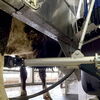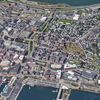Processing Your Payment
Please do not leave this page until complete. This can take a few moments.
- News
-
Editions
-
- Lists
-
Viewpoints
-
Our Events
-
Event Info
- Women's Leadership Forum 2025
- On the Road with Mainebiz in Bethel
- Health Care Forum 2025
- On The Road with Mainebiz in Greenville
- On The Road with Mainebiz in Waterville
- Small Business Forum 2025
- Outstanding Women in Business Reception 2025
- On The Road with Mainebiz in Bath
- 60 Ideas in 60 Minutes Portland 2025
- 40 Under 40 Awards Reception 2025
- On The Road with Mainebiz in Lewiston / Auburn
- 60 Ideas in 60 Minutes Bangor 2025
Award Honorees
- 2025 Business Leaders of the Year
- 2024 Women to Watch Honorees
- 2024 Business Leaders of the Year
- 2023 NextUp: 40 Under 40 Honorees
- 2023 Women to Watch Honorees
- 2023 Business Leaders of the Year
- 2022 NextUp: 40 Under 40 Honorees
- 2022 Women to Watch Honorees
- 2022 Business Leaders of the Year
-
-
Calendar
-
Biz Marketplace
- News
- Editions
- Lists
- Viewpoints
-
Our Events
Event Info
- View all Events
- Women's Leadership Forum 2025
- On the Road with Mainebiz in Bethel
- Health Care Forum 2025
- On The Road with Mainebiz in Greenville
- On The Road with Mainebiz in Waterville
- + More
Award Honorees
- 2025 Business Leaders of the Year
- 2024 Women to Watch Honorees
- 2024 Business Leaders of the Year
- 2023 NextUp: 40 Under 40 Honorees
- 2023 Women to Watch Honorees
- 2023 Business Leaders of the Year
- + More
- 2022 NextUp: 40 Under 40 Honorees
- 2022 Women to Watch Honorees
- 2022 Business Leaders of the Year
- Nomination Forms
- Calendar
- Biz Marketplace
Regional approach | A private sector perspective on the challenges and opportunities of doing business in the midcoast
President of Perry & Banks Marketing in Portland, and Jim Damicis, senior vice president of Camoin Associates in Scarborough
We’ve all heard the story of the four blind men and the elephant. Depending on their perspective, each of the men describes the elephant as a pillar, a rope, a tree branch — well, you get the picture. Maine’s midcoast suffers the same fate as the poor elephant. If you focus only on one or two aspects, you’ll miss the magnificence of the entire region. And given popular misconceptions of Maine’s midcoast, you might miss the economic opportunities.
The midcoast region is defined as the towns of Brunswick and Harpswell plus Sagadahoc, Lincoln and Knox counties. Last year, the authors of this commentary were hired by the MidCoast Council of Governments to create an economic development marketing plan for the region.
The best place to start when it comes to economic development marketing is with area businesses themselves. Why did they pick this region and why do they remain? What are their successes? Their challenges? And what is their advice to other businesses looking to relocate? As part of the overall process, we conducted interviews with about a hundred businesses, town planners, economic development directors and cultural and educational organizations.
Here is what they collectively had to say:
1. Coastal regions have inherent “brands” due to their maritime and recreational nature. This can lead to misconceptions regarding the area’s business vitality and potential. These generalizations take root when there is a lack of specific information about a region and create a challenge when developing a business-friendly brand. These misconceptions include:
- Lack of industrial or business parks
- Higher-priced developable land
- More retirees
- Lack of available trained labor
- Limited access to major transportation byways
- A seasonal lack of cultural amenities
- Made up of mostly older, traditional industries like fishing and boat building
2. Despite its challenges, the region has real opportunities for commercial and industrial development. Key opportunities in this area are:
- Available commercial and industrial properties supported by infrastructure and their host communities
- Towns that want businesses to thrive and will work with them to move quickly
- Area officials who will help business grow by providing loans, grants, technical assistance and other business support items
3. Business owners have personal preferences and look for opportunities at the regional level, often combining their recreational preferences with their business assessments.
4. Reducing uncertainty is key to business attraction. Business survives on its ability to accurately predict growth, needed resources and return on investment. Surprises in the development and approval processes only add to the uncertainty of success.
5. Peer-to-peer recommendations rank among the most trusted sources of information. The midcoast region is full of business owner advocates. The region should tap those businesses and promote their positive experiences and attitudes.
6. Quality of place is a main driver and a real asset. Asked why they chose the area, business people said they “wanted to live here.” Reasons included:
- The natural environment
- Ease of transportation with the Portland International Jetport and I-95
- Cultural amenities
- Communities and regions that are appropriately scaled so individuals can make a real difference
7. Business owners have a keen sense of what it takes to be successful. For the most part, they understand that they have given up easier business growth (South Carolina was frequently mentioned as an attractive option) for the quality of place that epitomizes the midcoast. They describe themselves as entrepreneurs and innovators.
8. Maine’s work force is skilled, available and loyal. Business owners praised their work force, citing loyalty, inventiveness and value for a full day’s work as the qualities they appreciate most.
9. Historic downtowns matter as part of local, regional and state access to culture. Maine has more than its share of downtowns where people can have a full experience (shop, eat, socialize).
10. Arts and cultural events are important to the spouses and families of relocating business owners. They want to know what activities are available in this new place.
Dynamic businesses and business opportunities are abundant in midcoast Maine. It’s time to toot our horn — Maine is open for business.










Comments